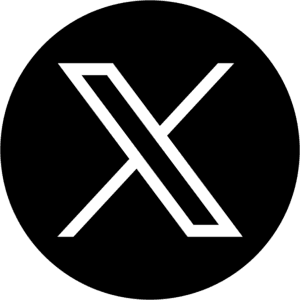Can AI Really Beat Human Instinct in Keyword Research?
Rohit, a performance marketer at a SaaS company, spends his Monday morning reviewing last week’s ad performance. He had meticulously picked keywords using Google Keyword Planner, filtered them based on search volume and CPC, and launched a Google Ads campaign.
But despite the effort, his CPC has shot up by 25%, and his conversion rate has dropped.
"What is going wrong?" he wonders.
His search terms report reveals a painful truth:
1️⃣ He bid on keywords with high competition, making them expensive.
2️⃣ His ads appeared for irrelevant variations of his chosen keywords.
3️⃣ He missed out on high-intent keywords that weren’t in Google’s static dataset.
Rohit’s frustration is common—traditional keyword research is outdated in today’s dynamic digital landscape. AI-powered keyword research is stepping in to solve these issues.
Let’s explore why traditional methods fail, how AI transforms keyword shortlisting, and what real-world case studies reveal about AI-driven ad targeting.
1. Why Traditional Keyword Research No Longer Works
For years, keyword research relied on:
🔹 Google Keyword Planner – A great tool but limited by past search data.
🔹 Manual Competitor Analysis – Time-consuming and reactive, not predictive.
🔹 Relying on Static Search Volume – Often misleading and slow to adapt.
🚨 The Big Problem?
85% of marketers still rely on traditional keyword research (HubSpot Research, 2023).
Manually researched keywords become irrelevant faster in today’s rapidly shifting search landscape.
Traditional tools don’t account for real-time intent shifts, leaving marketers guessing rather than optimizing.
2. How AI is Reshaping Keyword Research & Shortlisting
🔍 AI vs. Traditional Research: The Key Differences
Feature Traditional Keyword Research AI-Powered Keyword Research Data Type Historical search volume Real-time search trends & intent Competition Analysis Static CPC & bid estimates Predicts future competition shifts Context Understanding Exact-match keywords AI-driven semantic keyword clustering Efficiency Manual, time-consuming Automated, real-time insights

AI doesn’t just find keywords—it understands user behavior, purchase intent, and emerging trends.
3. AI-Powered Strategies for High-Converting Keyword Shortlisting
Here’s how AI automates and optimizes keyword research:
1️⃣ Intent-Based Keyword Clustering
AI doesn’t look at keywords in isolation. It analyzes user intent and groups related terms into semantic clusters.
🔹 Example: Instead of “best CRM software”, AI identifies:
“best CRM for startups” (B2B niche)
“CRM for sales automation” (Feature-based)
“top free CRM tools” (Budget-conscious users)
🔹 Result? Instead of bidding broadly, advertisers target specific, high-intent user searches.
2️⃣ Predictive Search Trends: Getting Ahead of the Competition
AI predicts which keywords will trend before they explode in competition.
🔹 How? Machine learning models analyze historical data, search patterns, and seasonality trends to recommend keywords before they peak.
🔹 Example:
Before the 2022 iPhone launch, AI identified rising searches for "best iPhone trade-in deals” weeks before traditional tools did.
Marketers who acted early secured lower CPCs and better ad placements.
3️⃣ AI-Driven Negative Keyword Identification
One of the biggest hidden PPC killers is irrelevant clicks. AI identifies negative keywords to prevent wasted spend.
🔹 Example:
A luxury sneaker brand bidding on “premium running shoes” wasted money on searches like “cheap running shoes”—until AI flagged this and automatically added “cheap” as a negative keyword.
🔹 Result?
27% lower cost per acquisition (CPA)
18% higher ad relevance score
📌 Tool Recommendation: BooleanMaths AI uses AI-powered attribution to prevent wasted PPC spend.

4. Tools to Automate Keyword Research & Shortlisting
✅ Google Ads AI (Smart Bidding & Keyword Expansion)
🔗 Google Ads
Uses machine learning to adjust keyword bids in real-time.
Expands keyword lists dynamically based on performance data.
✅ SEMrush AI-Powered Keyword Research
🔗 SEMrush
Identifies low-competition keyword clusters.
Predicts future CPC trends.
✅ Clearscope NLP Optimization
🔗 Clearscope
AI-powered content & ad copy optimization.
Uses semantic keyword analysis to match user intent.
✅ BooleanMaths AI (Advanced Attribution & Analytics)
🔗 BooleanMaths
AI-driven keyword tracking & ad attribution.
Predictive analysis for budget optimization.
5. The Future of AI in Keyword Research & Ad Targeting
🚀 What’s Next?
◻️ Predictive Keyword Modeling – AI will forecast keyword demand before trends emerge.
◻️ Voice & Visual Search Keywords – AI will optimize for spoken queries & image-based search.
◻️ Real-Time AI Attribution – AI will instantly reallocate ad budgets based on live campaign data.
📌 McKinsey predicts that AI-driven automation will improve paid search efficiency by 50% by 2025.
Final Thoughts: AI is Not Replacing Marketers—It’s Empowering Them
Sameer’s frustration with traditional keyword research is a thing of the past. AI helps him:
✅ Find high-converting keywords faster
✅ Reduce wasted PPC spend
✅ Optimize ad targeting based on real-time user intent
💡 Key Takeaway:AI-powered keyword research isn’t just an advantage—it’s now a necessity for modern advertisers.







